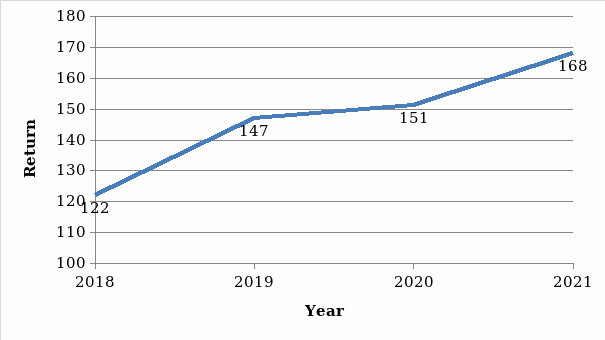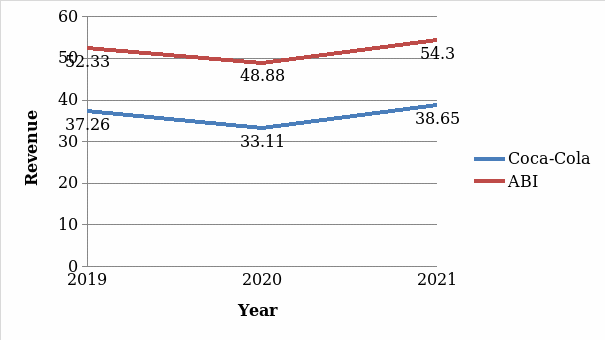Introduction
Multinational companies struggle to dominate the sales market and capture new economic niches. Such struggles are justified by the desire to gain consumer appreciation, improve sales and audience reach, and, most importantly, increase profits. To achieve these goals, companies use a variety of marketing strategies and business plans and develop the skills of their employees. Many beverage companies compete with business giants-Coca-Cola, Pepsico, Santory, Nestle, Anheuser-Busch InBev, and many others. There is also a competitive spirit between the giants, so it is interesting to compare how the world’s largest leaders organize their activities to understand business project management.
The aim of the study: To compare the activities of Coca-Cola and Anheuser-Busch InBev (ABI) and establish the fundamental differences in business strategies.
Overview of the Coca-Cola Business
The Coca-Cola Company is a large American food company holding the first place in the world for the production and supply of concentrates, syrups, and soft drinks. The history of the most popular drink, Coca-Cola, began in 1886 when pharmacist John Pemberton introduced it to treat morphine addiction. The rights to the drink were purchased from Pemberton’s widow and registered by Isa Candler. The company has grown rapidly and gradually conquered the American and global markets. The Coca-Cola Company shares are listed on the New York Stock Exchange under the KO ticker. The USA has the largest percentage and turnover of revenue, accounting for more than half of the company’s total revenue. The company’s success is conditioned by unique strategies, its commitment to creating quality products, and its employees’ constant motivation to create the best (The Coca-Cola Company, 2021b). The Coca-Cola Company produces concentrates, syrups, and soft drinks and owns more than 350 brands, in whole or in part, both globally and regionally.
Overview of Anheuser-Busch InBev
ABI is an international brewing corporation, the largest beer producer. The corporation was formed on November 18, 2008, by the merger of the Belgian-Brazilian company InBev and the American Anheuser-Busch. The best-selling beer brand (not only by the corporation but also in the world) is Budweiser; it is sold in 73 countries, and the U.S. accounts for only a third of its sales. The corporation has multiple centers in different geographical locations, which allows it to gather information from numerous economic niches (Schiff, 2021). Its success depends mainly on the number of business units that skillfully target a specific consumer market while maintaining the company’s original principles.
Comparison of Coca Cola and AIB business
Strategies
Coca-Cola uses marketing strategies based on retrospective analysis of market conditions and then incorporates current needs into its operations. According to the company, the network way of working is primarily a factor in this distribution of products (The Coca-Cola Company, 2021b). In addition, the company uses direct marketing and household incentives; it invites consumers to accept its products as routine and necessary every day. Viral marketing and telemarketing are particularly popular with the company. Everyone knows the “Taste the feeling” Christmas commercial because it is a memorable motif constantly in front of their eyes.
For ABI, marketing is based on four main categories each division adheres to. A company vice president reports that ABI focuses on creativity, content publishing, third-party innovation, and sustainability (Schiff, 2021). Although Coca-Cola also enjoys similar principles, ABI takes advantage of disjointed geography that gives them firsthand information. The company is not trying to make consumers believe their product is critical; it focuses on personalizing the experience and transforming it on a global scale.
Performance
Coca-Cola reported its performance most recently in early February 2022, when it released its 2021 reports. The company highlighted an improvement in revenue trends over 2019 when it was plagued by the recession (The Coca-Cola Company, 2021a). Figure 1 shows the growth curve that shows total shareowner return.

One can see that the company’s assets are up 14% over 2019 and 37% over 2018. This growth is justified by effective asset and securities management during the pandemic and rapid adaptation to the new environment. In addition, Coca-Cola is showing an increase in net revenue: up 17% for all of 2021 (The Coca-Cola Company, 2021a). It is quite a strong performance due to the ability to respond quickly to critical situations.
ABI did not show as clear growth as Coca-Cola. The company reports annual growth of only 9.6% for all products: for alcoholic and nonalcoholic beverages, growth was 9.7% and 8.7%, respectively (AbInBev, 2021). Nevertheless, the company reports that total revenue was 15.6%: hence, like Coca-Cola, the corporation is showing a successful adaptation to the post-pandemic market. A comparison of the company’s revenues over the past two years is shown in figure 2.

It can be seen that despite ABI’s significantly higher revenues, Coca-Cola is still showing more efficient growth.
A Comparison of Successes and Failures
There have been phases of ups and downs for companies, justified by both failed sales strategies and failed new products. The first successful new product for Coca-Cola was Cola Zero, which successfully took over the U.S. market. The drink became in line with regular Coca-Cola and significantly increased overall revenues in the mid-noughties. In addition, the company created the most recognizable product look: the font, color, size, and design of the bottle. The company recently began making lists of “zombie” products that didn’t pay off within three years (The Coca-Cola Company, 2018). It allowed more focus on innovation and improved profits from advertising campaigns.
Among Coca-Cola’s failures, the failed new technology on cornstarch stands out. New Coke suffered a significant setback in 1985, and the company’s assets began to plummet (The Coca-Cola Company, 2018). In addition, Dasani water’s launch in the previous decade violated water purity guidelines, and the slogan was offensive to the U.K. market. Flavored colas (cherry, citrus) never became successful products, though they continue to be in selective markets.
For ABI, the successful products were Budweiser, Corona Extra, and Lowenbrau. Budweiser became a trademark and the best-selling beer in the company’s history. Corona Extra, a pale lager, is the best-selling beer in the USA. Due to the pandemic, sales of this beverage have only increased. Lowenbrau is based in Munich, Germany, where it regularly takes proper places at festivals and events related to the beer theme. In addition, it is one of the oldest drinks because it is made in a brewery that is more than 500 years old.
Nevertheless, ABI has gaps in its sales and product selection strategies, just like Coca-Cola. First and foremost is the hope for craft beer, which continues to generate negligible profits despite the company’s efforts. In addition, the corporation has been spending enormous amounts on raw materials since the end of 2021, which will not allow it to generate a high volume of revenue turnover in 2022. It is due to an unsuccessful course of short-term success, which does not allow it to maintain the stability of new beverage sales like Coca-Cola.
Conclusion
In summary, the study found that Coca-Cola and Anheuser-Busch InBev have a jump in revenue growth driven by the pandemic’s impact. Despite this, the companies’ revenues reach more than 10%. The companies use different motives as marketing strategies: Coca-Cola is focused on globalization and Anheuser-Busch InBev on personalization. The companies’ successes were justified by new beverages, while failures were primarily due to a weak strategy.
References
The Coca Cola Company. (2021a). Annual report pursuant to section 13 or 15(d) of the securities exchange act of 1934.
AbInBev. (2021). Anheuser-Busch InBev reports fourth quarter and full year 2021 results.
The Coca Cola Company. (2021b). Streamlined portfolio of brands, marketing, and innovation to power Coke’s 2021 strategy.
Schiff, A. (2021). AB InBev on why advertisers are starting to act more like publishers. AD exchanger.
The Coca Cola Company. (2018). Success, failure, and zombie hunting.